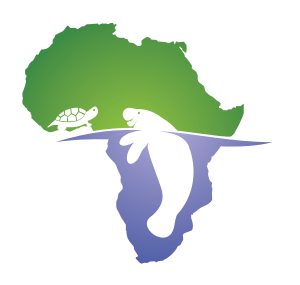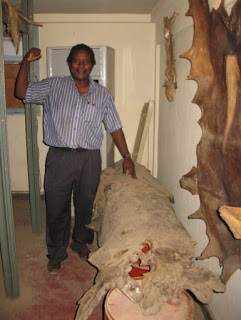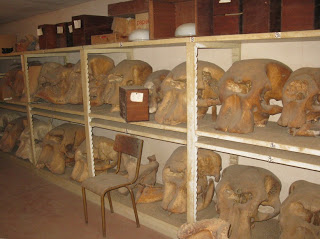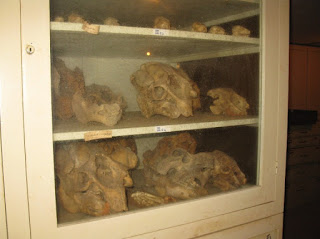Back in business in Dakar
Time is flying! I’ve already been in Senegal a week and a half, but it seems much shorter. I hit the ground running and have had several very productive meetings while in Dakar.
Last week I met with Alain Seck, the curator of the mammals collection at IFAN (which stands for Institute Francaise d’Afrique Noir (the French Institute of Black Africa), a very antiquated, colonial title) which is basically the university’s museum. It’s a very dusty place with old specimens that were mostly collected prior to the 1950’s. However, they’ve recently installed a new, state of the art air conditioning system to help preserve the specimens, and Alain gave me a full behind the scenes tour of their huge collection. Much of it was a bit depressing, because most of the large mammals whose skins I saw no longer occur in Senegal. The museum has the skin of the last giraffe and the last elephant that existed in Senegal, killed in the late 1950’s. There were numerous primate and elephant skulls, stuffed birds, and all kinds of snakes and lizards in jars of formalin.
Here Alain Seck is posing with a Mediteranean Monk seal skin…these seals don’t usually occur as far south as Senegal
Of course my eyes lit up as I rounded a corner and saw an entire cabinet of West African manatee skulls! The museum has 14 specimens, most collected by Bessac and Villiers in the 1940’s. Alain and I discussed my taking samples from these skulls (there is also a skeleton and a mummified head, see below) for genetics, stable isotope, and age determination analyses. The museum has a record of where each of these specimens was collected (Alain thinks they came primarily from the Senegal River), so this will be a wonderful historical reference to compare to the more recent manatee samples I’ve collected from the same areas. In return for the samples, of course the museum will receive my analysis results to add to their data. We agreed that I’ll return later in the summer to collect the samples. What a treasure trove!
This mummified manatee head was originally preserved in formalin for many years, so now it’s rock-solid (although part of the snout has decayed). Although it’s unlikely DNA could be extracted from these tissues after this kind of preservation, I’m hoping the vibrissae (small stout whiskers on the snout) will be able to be analyzed for stabe isotopes, to determine what this manatee ate.
 |
I’ve also met with Helen Scales, the British journalist and seahorse researcher who interviewed me for the Naked Scientist podcast a couple months ago. She and her husband are here in Senegal and the Gambia for a couple months on a pilot trip, hoping to set up research study sites for the future. Today Helen and I are going to continue our discussion of West African manatees and record it for a BBC radio broadcast. I’ve also set up other meetings with the American ambassador (who I’ve known for many years, as he happens to be the older brother of my college roomate) and Haidar el Ali, the new Minister of the Environment, who is also Tomas’s old boss and mentor from Oceanium Dakar, so I look forward to seeing them both again and talking about long-term manatee work in Senegal.
Now I’m packing up my equipment and other supplies because on Saturday Tomas and I are heading up to Lac de Guiers and the Senegal River for 12 days of fieldwork. I’ll be collecting manatee food source samples (plants, clams, fish), visiting many new sites, interviewing people about manatees along the way, and of course hoping to see some of the elusive beasts! I hope to have lots of stories to report.





I was able to visit this impressive collection on several occasions. Please note my website.http://www.americantowns.com/ny/bronx/news/inside-africa-a-zoological-museum-1988-17054178
Thank you for letting me know about your webpage!